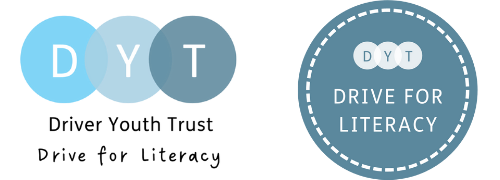Using phonics effectively to increase attainment and improve learning
4/11/2016
We attended the 2016 phonics conference recently. There was a good line up of qualified speakers who spoke about the impact of Phonics on attainment and improving learning. There were a variety of views represented in the audience comprising mainly of head teachers, primary school teachers, local authority advisors and a few SENCo’s. The majority agreed that phonics was essential to learning how to read and write, but there were dissenters.
An article in the Guardian, suggests that ‘those taught to read using other methods lagged behind at age seven, but they had caught up by age 11, suggesting that children who are not at a disadvantage will learn to read in any case.’
Key points from the conference:
- Phonics is integral to learning how to read and write.
- Phonics should be taught from an early age (no need to wait until the learner reaches reception).
- It’s not the programme of phonics that’s important, but the approach to teaching it.
- There should be a whole-school approach to teaching phonics.
- Phonics should not be limited to KS1 and continue to be taught throughout primary years (One to six).
- According to the National Foundation for Educational Research (NFER) the phonics screening check has established that teaching and learning phonics enhances a learner’s access to the broader curriculum.
- Speaking and listening skills are vital components when teaching phonics.
- There is a fundamental relationship between attainment and phonics as well as an association with improved learning (DfE, 2015).
Gordon Askew, a DfE phonics adviser, is interested in producing ‘real readers’, children who find reading fun. He believes phonics has a crucial part to play in reading and believes that the key to success is well taught systematic, synthetic phonics.
Per Askew’s research, there are misunderstandings in the system which stop phonics having the impact they should. For example, the teaching of phonics needs to be delivered within the complete context of reading. The simple view of reading (Gough and Tunmer, 1986) model and the Independent review of the reaching of early reading (Rose, 2006), which informs the new curriculum should be emphasized when practitioners deliver the teaching of phonics. The problem that we have is that not everyone who teaches phonics is aware of the ‘simple view of reading’ and its importance in establishing word recognition and comprehension skills.
It was reported that nationally there are far too many leaners leaving schools without being able to read. There is also a group of individuals who can read functionally, but do not read comfortably or easily and our position in terms of international rankings is a disappointment. Nevertheless, the teaching of phonics has improved, and according to Askew it should be the first strategy that is applied, especially when decoding unknown words. He believes there are no other reliable strategies such as using context, i.e. pictures, meaning, grammar and this is all guess work. Therefore, many learners find it very difficult to decipher words from context.
Myth
‘Children learn in different ways – different methods; no size fits all. Many children pick up reading relatively easily.’
Phonics is not a method of teaching reading. It is the core knowledge needed to read. We cannot leave the teaching of reading to chance. We need to teach the core knowledge – phonics. It is a system that works!
However, whilst it may give some learners with difficulties a reliable way to learn how to read, it doesn’t work for everyone and there are other methods that can be applied. There needs to be more emphasis on research into these alternative methods.
The most damaging myth
‘To develop comprehension through books they cannot read.’
We should not provide learners with non-decodable books in the early stages. We need to talk about books, stories, have discussions on articles and develop language comprehension by speaking and writing. Learners need to be able to lift the ‘word’ off the page. That’s when they will begin to access text within their present language comprehension.
Gillian Ball, who is the principal at Christchurch C of E primary school says, ‘it is your approach to teaching phonics that will impact, not the programme that you have used.’ The school has 83 per cent ethnic minority learners, of which 39 per cent have EAL and over 39 different languages, excluding English, are spoken by them. This school has achieved ‘outstanding’ in their phonics assessments.
How did they do it?
- Whole school approach – transferrable skills used in reading and writing.
- Training – all staff are trained in the tailored phonics programme.
- Monitoring – learning walks are conducted, observations are carried out, as are half termly assessments. SLT acts as quality assurance and feedback and support are given to struggling staff.
- Assessments – specific tests to assess phonics skills, administration of phonic screening check.
- Leaders – leaders are responsible for phonics and should be given a high profile.
- Parental involvement – parents are provided with phonics workshops.
- ‘All adults are leaders for learning. They share responsibility for progress and attainment.’
Phonics clearly has had an impact on learning and on closing the gap for attainment. However, other methods that are being used across schools should not be dismissed. Further research to determine their validity is needed as the phonics screening check does not necessarily prove that a child has reading fluency once they have passed it.
